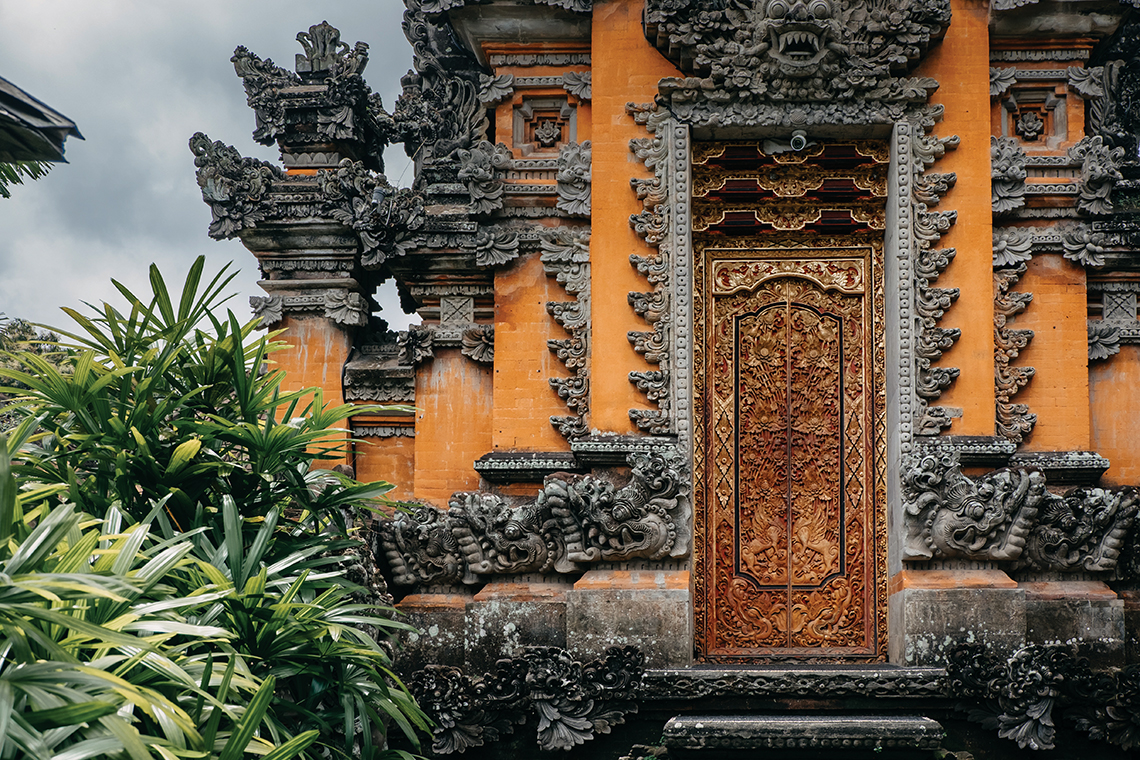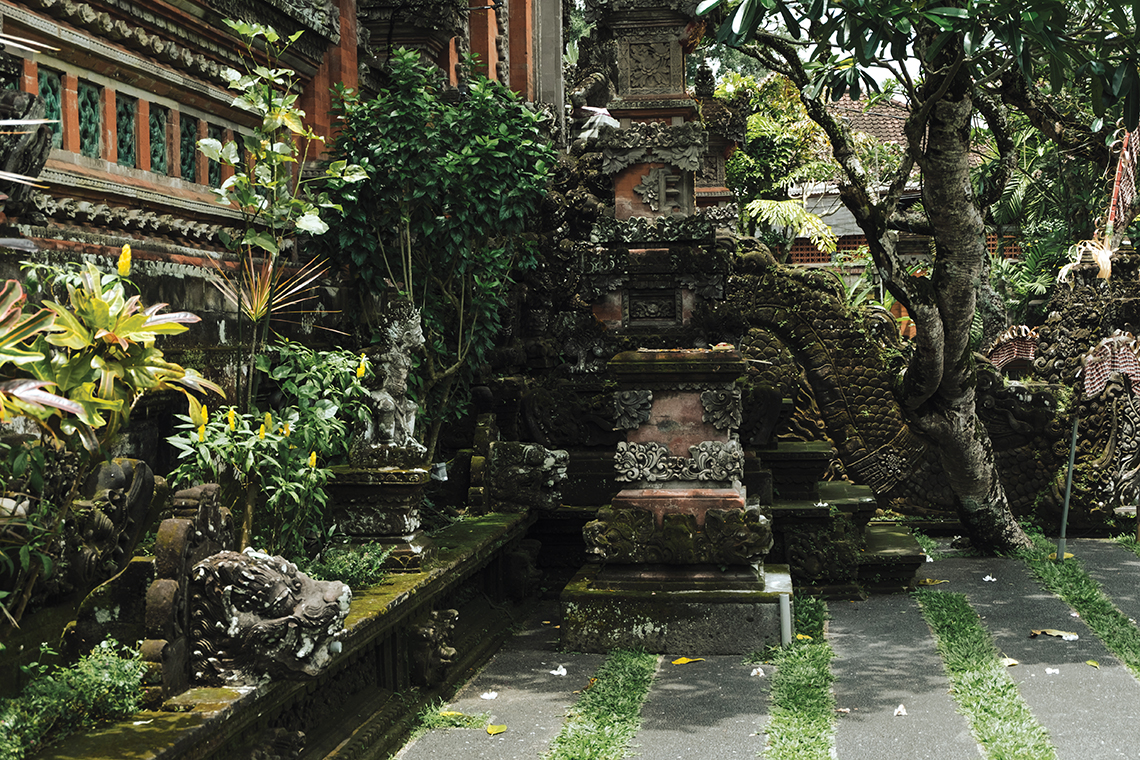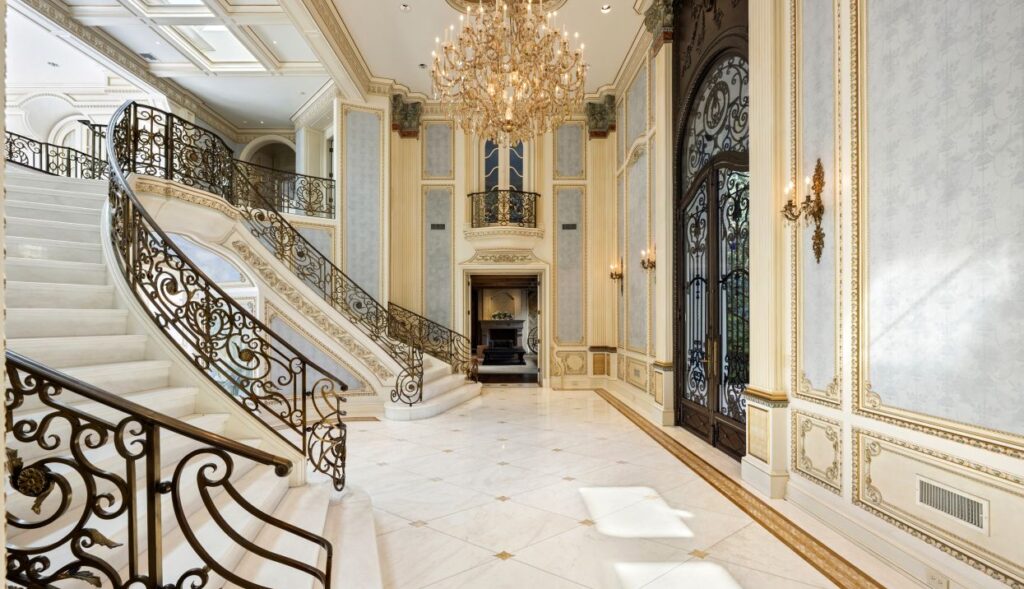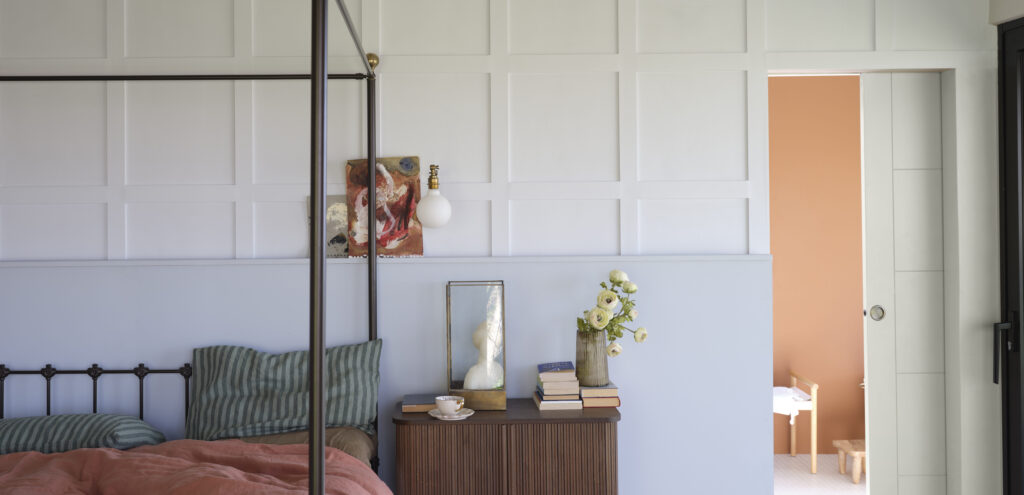Snugly situated in the corner of Southeast Asia, the island of Bali (Indonesia) spans 2,232 square miles. Slightly larger than the state of Delaware, this charming tourist destination is located on the westernmost end of the Lesser Sunda Islands and roughly two miles east of Java. Aside from its notoriety as a popular Far East hotspot, Bali is also known for its many temples scattered throughout, earning it the name “The Island of a Thousand Puras.” Holding mythological significance, the Pura Taman Saraswati Temple is one of the most popular landmarks in Ubud, a small town within Bali. Officially known as Pura Taman Kemuda Saraswati, this Balinese Hindu temple is one worth seeing.
Amid Ubud’s striking landscape, the Pura Taman Saraswati Temple quietly invites visitors out from the surrounding farms, rice paddies, and dense forests and into its mesmerizing grounds. Although Ubud is considered the cultural capital of Bali, only seven percent (30,000 people) of Bali’s population resides there. Followers of Balinese Hinduism find solace in the temple as they dedicate their time in the divine structures that were built in accordance to the rules, style, guidance and rituals found in Balinese architecture. Designed as an open-air space of worship, the Pura Taman Saraswati Temple is interwoven by a series of intricately decorated gates, each one leading to an undiscovered shrine.
 Sometimes referred to as the “Water Palace,” the Temple is symbolically dedicated to the Hindu Goddess Saraswati, the Goddess of knowledge, music, art, wisdom and learning; Saraswati translates to “one who leads to essence of self-knowledge.” The Goddess is a patron deity of Ubud, so it should come as no surprise that the town itself is very expressive and artistic in its own right. Many of the temple’s carvings and sandstone bas-reliefs were created in her honor.
Sometimes referred to as the “Water Palace,” the Temple is symbolically dedicated to the Hindu Goddess Saraswati, the Goddess of knowledge, music, art, wisdom and learning; Saraswati translates to “one who leads to essence of self-knowledge.” The Goddess is a patron deity of Ubud, so it should come as no surprise that the town itself is very expressive and artistic in its own right. Many of the temple’s carvings and sandstone bas-reliefs were created in her honor.
Pura Taman Saraswati was designed by Gusti Nyoman Lempad, an art master whose team began the construction of the Temple in 1951 (which was completed by 1952). Lempad arrived in Ubud after moving away from the royal court of Blahbatuh and was considered one of the most talented artists of the pre-war Balinese modernist painters. Employed by the Sukawati Royal Family, Lempad was a notable stone sculptor and architect who built palaces and temples throughout Ubud and its neighboring villages.
The Pura Taman Saraswati Temple was constructed to conform with the rules of Tri Mandala, a concept of Balinese space allocation. The design of the Temple consists of the three divine mandala zones arranged according to a sacred hierarchy: Nista mandala, Madya mandala, and Utama mandala. The Nista mandala, the outer less-sacred realm, directly connects the temple to the outer world and holds the entrance to the temple; a sweeping lotus pond and water garden marks the outer region of the Pura Taman Saraswati Temple. As plumeria trees embellish the perimeter of the pond, a straight bridge-like path is lined with Hindu mythological sculptures made from tuff, a type of rock formed of volcanic ash. Many of which were the original works of Lempad himself.
Subsequently, the Madya mandala, the middle realm, is where several pavilions are located in elaborate layers. Access to the inner sections of the Pura Taman Saraswati Temple is provided by three red-bricked kori agung gates. The central kori agung is the largest of these gates and is flanked with two tall plumeria trees, marking the threshold into the most sacred space of the temple. The Utama mandala, inner layer, holds the highest importance. The sacred realm is home to the padmasana shrine (lotus seat). The sanctum is located at the most sacred northeast side of the temple, topped with a golden empty throne decorated with the image of Acintya, the highest deity in the Balinese Hindu pantheon. The base of the padmasana is adorned with carvings of the cosmic turtle and nagas (serpents), representing the world of demons.
 With a sweeping pond filled with blooming pink lotus flowers at its entrance – and an abundance of exquisite Balinese architecture – the Temple should be marked on the itinerary of any traveler whose journey takes them to Bali. Just off the main street, visitors can stop in during a leisurely morning walk to find peace within the walls of the Temple. If you arrive early (and you should) there is an attached café which welcomes visitors in for a cup of coffee before exploring Pura Taman Saraswati’s breathtaking grounds. Admission to the Temple is free, however it does suggest a dress code: Patrons are asked to wear a sarong and tops to cover their knees, ankles, shoulders and midriff (though this is not always enforced). One of Bali’s many picturesque photo ops, the Pura Taman Saraswati Temple is a stunning oasis amid the hectic and lively town of Ubud.
With a sweeping pond filled with blooming pink lotus flowers at its entrance – and an abundance of exquisite Balinese architecture – the Temple should be marked on the itinerary of any traveler whose journey takes them to Bali. Just off the main street, visitors can stop in during a leisurely morning walk to find peace within the walls of the Temple. If you arrive early (and you should) there is an attached café which welcomes visitors in for a cup of coffee before exploring Pura Taman Saraswati’s breathtaking grounds. Admission to the Temple is free, however it does suggest a dress code: Patrons are asked to wear a sarong and tops to cover their knees, ankles, shoulders and midriff (though this is not always enforced). One of Bali’s many picturesque photo ops, the Pura Taman Saraswati Temple is a stunning oasis amid the hectic and lively town of Ubud.
Did You Know?
With a population half the size of New York City, Bali is home to only 4,225,000 people. According to a 2010 census survey, roughly 83.5 percent of Bali’s population adhere to Balinese Hinduism. Tourism-based businesses such as art, traditional and modern dance, sculpture, painting, leather, metalworking and music, make up 80 percent of its economy. Positioned just 8 degrees south of the equator, Bali’s cluster of islands enjoys a fair climate year-round. The average temperature perpetually lingers at approximately 86 degrees Fahrenheit with humidity levels of about 85 percent.
While in Ubud:
For those seeking something more audacious, the landscape lends itself to a wide range of outdoor excursions. The Goa Gajah, also known as the Elephant Cave, contains both Hindu and Buddhist imagery. In addition, it’s said that the entrance to Goa Gajah also inspired Lempad’s design of the temple. Included on the UNESCO World Heritage Tentative List in 1995, the sanctuary was likely built in the 11th century Bali Kingdom. The origins of the cave are unclear, however, the popular folklore surrounding this cave is tied to the legendary giant Kebo Iwa.
The Puri Lukisan Museum, the oldest art museum in Bali, is home to the finest collection of modern and traditional Balinese paintings and wood carvings. Its contents span from the Pre-Independence War (1930–1945) to the Post-Independence War (1945 – present) era. The museum hosts seasonal workshops ranging from basketry to tradition Balinese dance. A true reservoir for cultural activation.
One hour south of Ubud, and perched atop distinctive rock formations along Jimbaran’s pristine sunset coast, is the Rock Bar. The bar features a luscious atmosphere and is hailed as the island’s most popular sunset, cocktail and entertainment venue. Visitors can enjoy the dancefloor as the DJ’s intensify the night experience from a custom DJ booth engraved into the cliffside. Patrons adhere to rather strict eveningwear so as to maintain the glamorous sunset vibe. The Rock Bar also showcases unparalleled views from nearly 50 feet above the Indian Ocean.
Where to Stay:
Despite the island’s small size, the Temple is a great stopover during leisurely walks through the town of Ubud. Just an eight-minute walk from the Pura Taman Saraswati Temple is the Kamandalu Resort, a five-star refuge. The name “Kamandalu” is adopted from the sacred Sanskrit language, referring to a vessel that holds holy water. The resort enjoys exclusive luxury accommodations with Ubud’s vernacular landscape of lofty rice terraces, natural stone finishes and indigenous grass rooftops. Nature paths also surround the site and provide access to the lush greenery that blankets the immediate area.
Within easy walking distance, the local villages sustain traditional artistic styles of painting, wood carving, handicrafts, dance and music. Villas are decked with traditional outdoor daybeds and free-form pools. Kamandalu also has one of the largest swimming pools in Ubud, equipped with a swim-up bar serving a full selection of exotic cocktails, afternoon tea and other pleasures. The resort encapsulates the peacefulness of Ubud, inspiring travelers to unwind and forget about the constraints of time.






